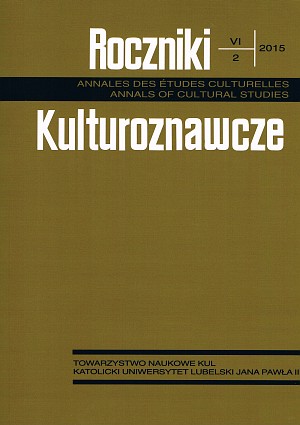Współpraca międzysektorowa w finansowaniu przedsięwzięć kulturalnych na przykładzie Teatru Muzycznego w Poznaniu
Cross-Sector Collaboration in Financing Cultural Undertakings as Exemplified by Teatr Muzyczny in Poznań
Author(s): Przemysław KieliszewskiPublished by: Towarzystwo Naukowe KUL & Katolicki Uniwersytet Lubelski Jana Pawła II
Keywords: cultural management; institutions of culture; cross-sector collaboration; financing of culture; cultural policy
Summary/Abstract: Cross-sector collaboration is an effective way of building coalitions to promote financing cultural undertakings. Such is the conclusion one could draw having analysed the operation of a public institution of culture, i.e. Teatr Muzyczny in Poznań. A change in the institution’s management model not only brought openness to collaboration in its operation, but also made the theatre begin to take market considerations into account, and even use them to its advantage. As financialization of almost every sphere of life continues, and possibilities to increase public subsidies remain limited, such attitude becomes unavoidable. The example of concert by the most outstanding singer of our time, Placido Domingo, which was organised by the Teatr, even though the resources held by the institution only accounted for 10% of the project value, shows the potential inherent in collaboration with different entities, incl. ones from other sectors of economy. In case of an undertaking of such complexity, it is advisable, nay indispensable. Complementary competences, qualities and properties associated with operation of various organisations (a public institution, a company, an association) in different sectors of economy, exert influence upon the synergy effect acquired. One such model quality is the ability to take substantial financial risk, which is typical of economic entities, and which can be taken only to a limited degree by a public institution reliant on subsidies from the self-government budget. However, a public subsidy stabilises a project, just like presence of public institutions on a project becomes a stimulus for private sector entities to join. In a number of ways, a public institution of culture can learn a lot from business and social partners. The use of crowdfunding for the purpose of producing a CD of Jekyll & Hyde musical by the Teatr is also an example of this phenomenon. Priority given to cross-sector collaboration and to adopting solutions employed in other sectors is also an impulse to put to good use the potential of public institutions of culture, which, after the 1989 system change, have not been able to adequately take political, social, and economic changes into account.
Journal: Roczniki Kulturoznawcze
- Issue Year: 6/2015
- Issue No: 2
- Page Range: 137-151
- Page Count: 15

